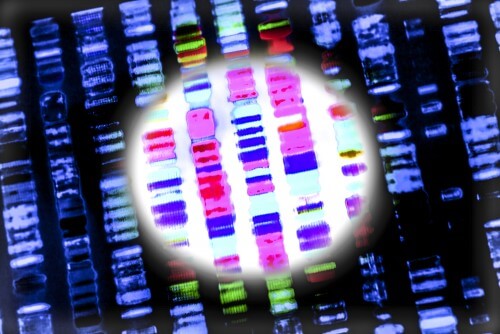Researchers at the Technion have developed an innovative technology that enables the detection of DNA sequences with a sensitivity 1,000 times higher than the sensitivity of existing methods. The principles of the research can enable the development of a wide variety of simple and relatively inexpensive medical diagnostic systems, for example for the purpose of identifying known mutations in DNA

Researchers at the Technion have developed an innovative technology that enables the detection of DNA sequences with a sensitivity 1,000 times higher than the sensitivity of existing methods. The principles of the research can enable the development of a wide variety of simple and relatively cheap medical diagnostic systems, for example for the purpose of identifying known mutations in DNA. The study appears on the cover of the journal Advanced Functional Materials.
The system was developed in collaboration between the research groups of Prof. Esti Segal from the Faculty of Biotechnology and Food Engineering and Associate Prof. Moran Berkovich from the Faculty of Mechanical Engineering. Doctoral student Rita Wilensky, who conducted the research under their direction, built a "lab on a chip" system that combines (1) a sensor for the optical detection of DNA molecules and (2) a system of micro channels, which allows the concentration of DNA by applying electric currents on the chip.
In Prof. Segal's laboratory, they develop optical biosensors (biological sensors) based on silicon chips with nanometric pores. "This perforated chip has a characteristic optical imprint in the visible light range," explains Prof. Segal. "We tie to it one of the complementary strands that make up the DNA molecule we want to identify. When we expose the chip to a multitude of sequences, we will be able to identify the reaction that occurs in that complementary strand fixed to the silicon.
"Specific capture of the DNA molecules within the silicon structure causes a change in the light spectrum reflected from the chip and allows us to easily identify and quantify these molecules, thus 'fishing' a sequence and knowing how much of it we have."
According to Prof. Segal, one of the main limitations in this process is the sensitivity of the sensors, which is sometimes insufficient, especially for medical diagnostic applications. Here, Prof. Berkovich, who develops microflow-based methods for increasing concentrations of biological molecules, is a research partner. "Using appropriate chemistry, and by applying electric fields, we can concentrate the DNA molecules we are interested in in a tiny spot and transport them towards the sensor," explains Prof. Berkovic. "This is how we 'trick' the sensor and present it with concentrations 10,000 times higher than the natural concentrations in the sample."
By intelligently planning the silicon structure and controlled growth of isolated oxide layers, the researchers were able to apply high electrical voltages to the chip while maintaining the special nanometric structure. "Combining the technologies allowed us to improve the sensor's sensitivity by a factor of between 1,000 and 10,000 compared to existing devices."
The research work was supported by the Russell-Berry Institute for Nanotechnology.
